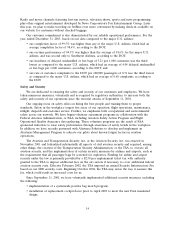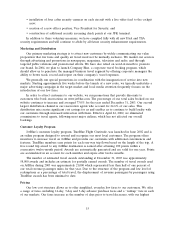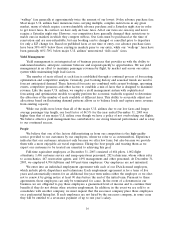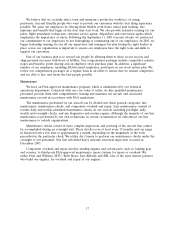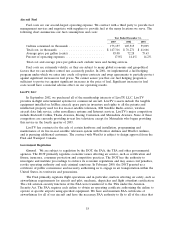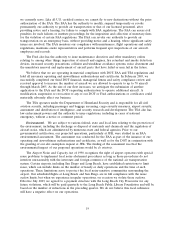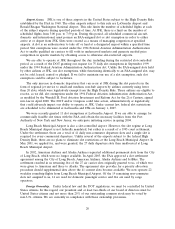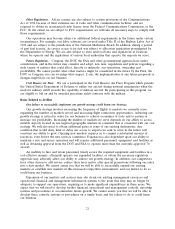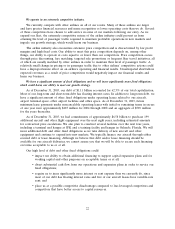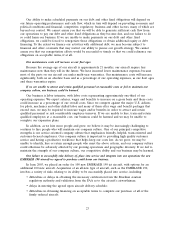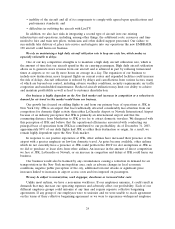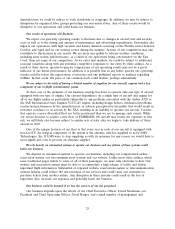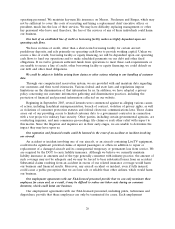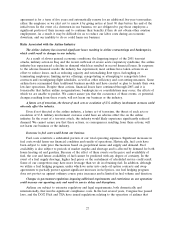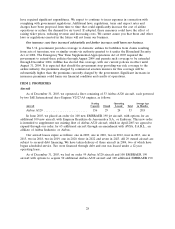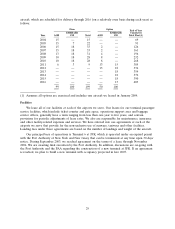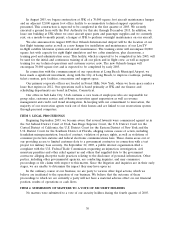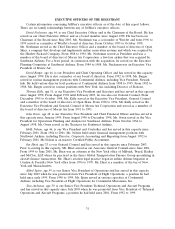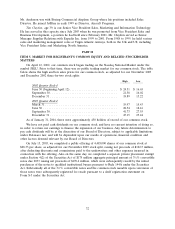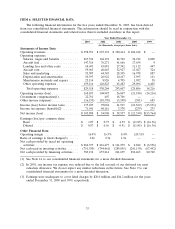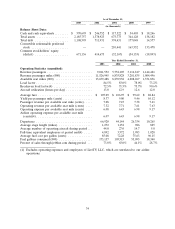JetBlue Airlines 2003 Annual Report Download - page 27
Download and view the complete annual report
Please find page 27 of the 2003 JetBlue Airlines annual report below. You can navigate through the pages in the report by either clicking on the pages listed below, or by using the keyword search tool below to find specific information within the annual report.• inability of the aircraft and all of its components to comply with agreed upon specifications and
performance standards; and
• difficulties in outfitting the aircraft with LiveTV.
In addition, we also face risks in integrating a second type of aircraft into our existing
infrastructure and operations, including, among other things, the additional costs, resources and time
needed to hire and train new pilots, technicians and other skilled support personnel. Our failure to
successfully take delivery of, place into service and integrate into our operations the new EMBRAER
190 aircraft could harm our business.
We rely on maintaining a high daily aircraft utilization rate to keep our costs low, which makes us
especially vulnerable to delays.
One of our key competitive strengths is to maintain a high daily aircraft utilization rate, which is
the amount of time that our aircraft spend in the air carrying passengers. High daily aircraft utilization
allows us to generate more revenue from our aircraft and is achieved in part by reducing turnaround
times at airports so we can fly more hours on average in a day. The expansion of our business to
include new destinations, more frequent flights on current routes and expanded facilities could increase
the risk of delays. Aircraft utilization is reduced by delays and cancellations from various factors, many
of which are beyond our control, including adverse weather conditions, security requirements, air traffic
congestion and unscheduled maintenance. Reduced aircraft utilization may limit our ability to achieve
and maintain profitability as well as lead to customer dissatisfaction.
Our business is highly dependent on the New York market and increases in competition or a reduction in
demand for air travel in this market would harm our business.
Our growth has focused on adding flights to and from our primary base of operations at JFK in
New York City. JFK is an airport that has traditionally attracted considerably less attention from our
competitors for domestic flight activity than either LaGuardia Airport or Newark International Airport
because of an industry perception that JFK is primarily an international airport and that the
commuting distance from Manhattan to JFK is too far to attract domestic travelers. We disagreed with
this perception of JFK and believe that the operational efficiencies associated with conducting our
principal base of operations from JFK has contributed to our profitability. As of December 31, 2003,
approximately 80% of our daily flights had JFK as either their destination or origin. As a result, we
remain highly dependent upon the New York market.
In response to our positive experience at JFK, other airlines have increased their presence at the
airport with a greater emphasis on low-fare domestic travel. As gates become available, other airlines
which do not currently have a presence at JFK could petition the DOT for slot exemptions at JFK as
we did or purchase or lease slots from other airlines. An increase in the amount of direct competition
we face at JFK, LaGuardia or Newark, or an increase in congestion and delays at JFK could harm our
business.
Our business would also be harmed by any circumstances causing a reduction in demand for air
transportation in the New York metropolitan area, such as adverse changes in local economic
conditions, negative public perception of the city, additional terrorist attacks or significant price
increases linked to increases in airport access costs and fees imposed on passengers.
We may be subject to unionization, work stoppages, slowdowns or increased labor costs.
Unlike most airlines, we have a non-union workforce. If our employees unionize, it could result in
demands that may increase our operating expenses and adversely affect our profitability. Each of our
different employee groups could unionize at any time and require separate collective bargaining
agreements. If any group of our employees were to unionize and we were unable to reach agreement
on the terms of their collective bargaining agreement or we were to experience widespread employee
24


